Related Research Articles
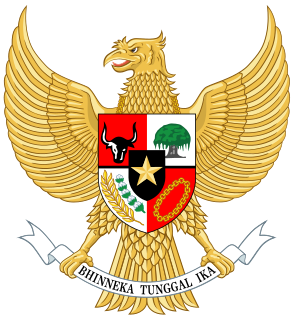
The politics of Indonesia take place in the framework of a presidential representative democratic republic whereby the President of Indonesia is both head of state and head of government and of a multi-party system. Executive power is exercised by the government. Legislative power is vested in both the government and the bicameral People's Consultative Assembly. The judiciary is independent of the executive and the legislature.
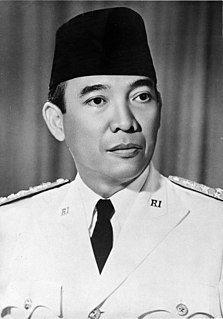
Sukarno was an Indonesian statesman, orator, revolutionary, and nationalist who was the first president of Indonesia, serving from 1945 to 1967.

Suharto was an Indonesian army officer and politician, who served as the second and the longest serving president of Indonesia. Widely regarded as a military dictator by international observers, Suharto led Indonesia through a dictatorship for 31 years, from the fall of Sukarno in 1967 until his own resignation in 1998. The legacy of his 31-year rule, and his US$38 billion net worth, is still debated at home and abroad.

Muhammad Hatta Lukman was an Indonesian communist politician, who served as the First Deputy Chairman of the Central Committee of the Communist Party of Indonesia (PKI), and a member of the People's Representative Council from 1956 until 1959. He was executed following the 1965 crackdown on the PKI.
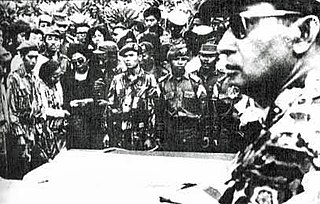
Indonesia's transition to the New Order in the mid-1960s ousted the country's first president, Sukarno, after 22 years in the position. One of the most tumultuous periods in the country's modern history, it was the commencement of Suharto's 31-year presidency.
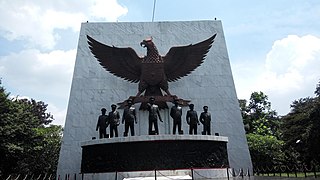
The Thirtieth of September Movement was a self-proclaimed organization of Indonesian National Armed Forces members who, in the early hours of 1 October 1965, assassinated six Indonesian Army generals in an abortive coup d'état, resulting in the unofficial but more accurate name of Gestok, for Gerakan Satu Oktober, or First of October Movement. Later that morning, the organisation declared that it was in control of media and communication outlets and had taken President Sukarno under its protection. By the end of the day, the coup attempt had failed in Jakarta. Meanwhile, in central Java there was an attempt to take control over an army division and several cities. By the time this rebellion was put down, two more senior officers were dead.

Air Chief Marshal (Ret.) Omar Dhani was commander of the Indonesian Air Force (TNI-AU) from 1962 until 1965. He was a leading leftist figure in Indonesia during the Sukarno era.

Amir Machmud was an Indonesian military general who was an eyewitness to the signing of the Supersemar document transferring power from President Sukarno to General Suharto.
Lubang Buaya is the suburb on Cipayung, East Jakarta, Indonesia which is also the site of the murder of seven Indonesian army officers during the 1 October coup attempt of the 30 September Movement. It is located on the outskirts of Jakarta near the Halim Perdanakusuma Air Force Base.
This is a list of activities carried out by the U.S. Central Intelligence Agency in Indonesia.

The Indonesian mass killings of 1965–66, also known as the Indonesian genocide, Indonesian Communist Purge, or Indonesian politicide, were large-scale killings and civil unrest primarily targeting members of the Communist Party of Indonesia (PKI). Other affected groups included communist sympathisers, Gerwani women, ethnic Javanese Abangan, ethnic Chinese, atheists, alleged "unbelievers" and alleged leftists. It is estimated that between 500,000 to 1,000,000 people were killed during the main period of violence from October 1965 to March 1966. The atrocities were instigated by the Indonesian Army under Suharto. Research and declassified documents demonstrate the Indonesian authorities received support from foreign countries such as the United States and the United Kingdom.
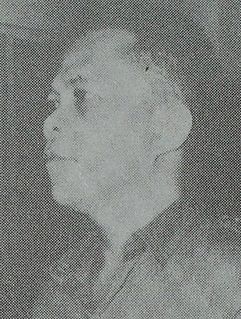
Lieutenant Colonel Untung bin Syamsuri was one of the leaders of the 1965 coup attempt in Indonesia known as the 30 September Movement.

The Tjakrabirawa Regiment was the presidential bodyguard unit of the former Indonesian President Sukarno. It was disbanded in 1966 because of its involvement in the coup attempt of the 30 September Movement.
Censorship in Indonesia has varied since the country declared its independence in 1945. For most of its history the government of Indonesia has not fully allowed free speech and has censored controversial, critical, or minority viewpoints, and during periods of crackdown it imprisoned writers and political activists. However, partly due to the weakness of the state and cultural factors, it has never been a country with full censorship where no critical voices were able to be printed or voiced.
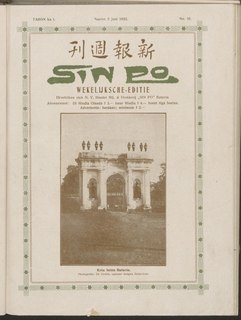
Sin Po was a Peranakan Chinese Malay-language newspaper published in the Dutch East Indies and later Indonesia. It expressed the viewpoint of Chinese nationalism and defended the interests of Chinese Indonesians and was for several decades one of the most widely read Malay newspapers in the Indies. It existed under various names until 1965.
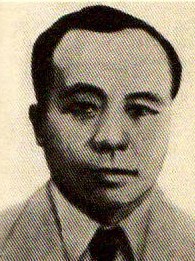
Ang Jan Goan was an Indonesian Chinese journalist, publisher and political thinker, and director of the influential newspaper Sin Po from 1925 to 1959.
Oloan Hutapea, also known as B. O. Hutapea, was a high-ranking member of the Indonesian Communist Party and one of its major theoreticians during the height of its power, and was leader of a clandestine wing of the party in 1967-8 during the Transition to the New Order.
Keng Po was a Malay language Peranakan Chinese newspaper published in Batavia, Dutch East Indies from 1923 to 1958. During most of that time it was the second-most popular Malay-language Chinese newspaper in the Indies after Sin Po. It was also an important paper in the early period of Indonesian independence in the 1950s.

Burhanuddin Mohammad Diah, born only as Burhanuddin, was an Indonesian journalist, diplomat, and businessman, who served as the 18th Indonesian Minister of Information from 1966 until 1968, under the presidencies of Sukarno and Suharto, during the transition to the New Order. He was present at the time of the Proclamation of Independence was being formulated, and was a figure who played an important role in saving the original text of the Proclamation.
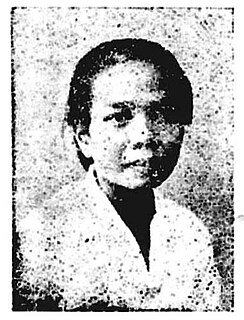
Sri Koesnapsijah was a Javanese language writer and activist of the Dutch East Indies and Indonesia who was among the generation of Indonesian women writers active in the 1930s. She was known for her short stories and articles which she published in the magazine Panjebar Semangat in the 1930s and 1940s, where she was also an assistant editor. After Indonesian independence she was active in the Communist Party-affiliated Gerwani movement, and was briefly a representative of the Communist Party in the Jakarta-area consultative body DPR-GR. She was arrested in late 1965 during the anti-communist repression of the Transition to the New Order and imprisoned without charge for the following decade.
References
- ↑ Roosa, John (2020). Buried histories : the anticommunist massacres of 1965-1966 in Indonesia. University of Wisconsin Press. p. 49. ISBN 9780299327309.
- 1 2 3 4 5 Sun, Wanning (2009). Media and the Chinese Diaspora: Community, Communications and Commerce. Routledge. pp. 95–6. ISBN 9781134263592.
- 1 2 3 4 Roosa, John (2020). Buried histories : the anticommunist massacres of 1965-1966 in Indonesia. University of Wisconsin Press. p. 47. ISBN 9780299327309.
- ↑ Area Handbook for Indonesia. U.S. Government Printing Office. 1964. p. 242.
- ↑ "Tolerantie". De Telegraaf (in Dutch). July 24, 1963. Retrieved 29 June 2020.
- ↑ "Twee linkse bladen in Indonesië keuren Vijfde colonne goed". Het vrije volk : democratisch-socialistisch dagblad. July 7, 1965. Retrieved 29 June 2020.
- ↑ Setiono, Benny G. (2008). Tionghoa Dalam Pusaran Politik. Jakarta: TransMedia. p. 424. ISBN 9789797990527.
- ↑ "Bezette Stad". Algemeen Handelsblad (in Dutch). October 4, 1965. Retrieved 30 June 2020.
- ↑ Roosa, John (2020). Buried histories : the anticommunist massacres of 1965-1966 in Indonesia. University of Wisconsin Press. p. xii. ISBN 9780299327309.
- ↑ Roosa, John (2020). Buried histories : the anticommunist massacres of 1965-1966 in Indonesia. University of Wisconsin Press. p. 53. ISBN 9780299327309.
- ↑ Sun, Wanning (2009). Media and the Chinese Diaspora: Community, Communications and Commerce. Routledge. p. 97. ISBN 9781134263592.